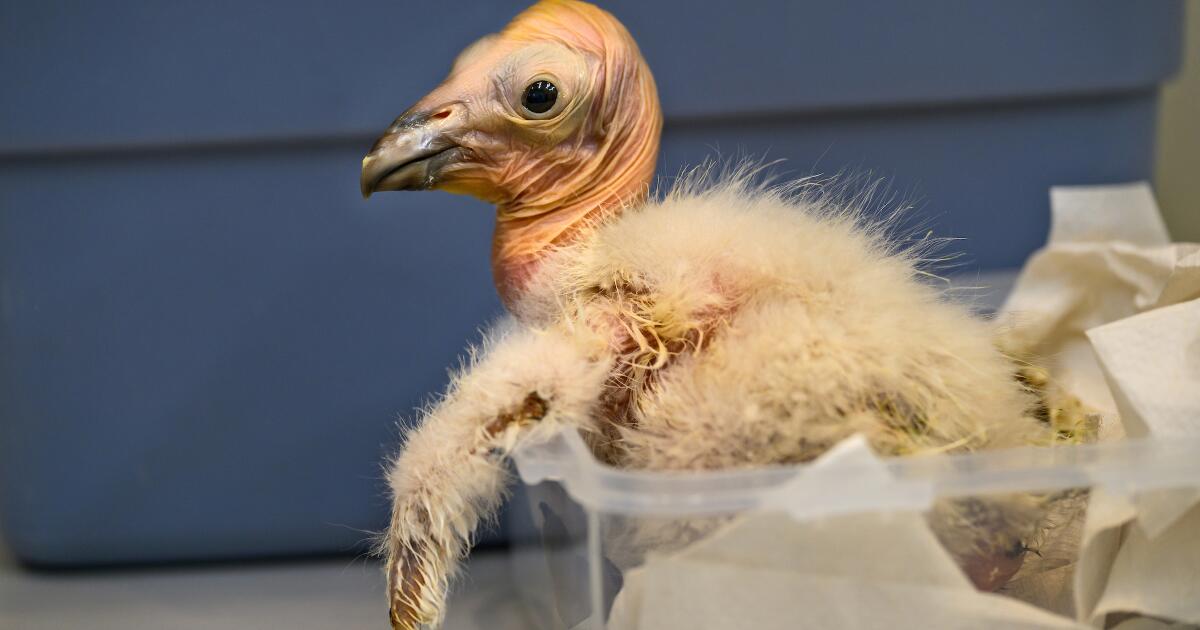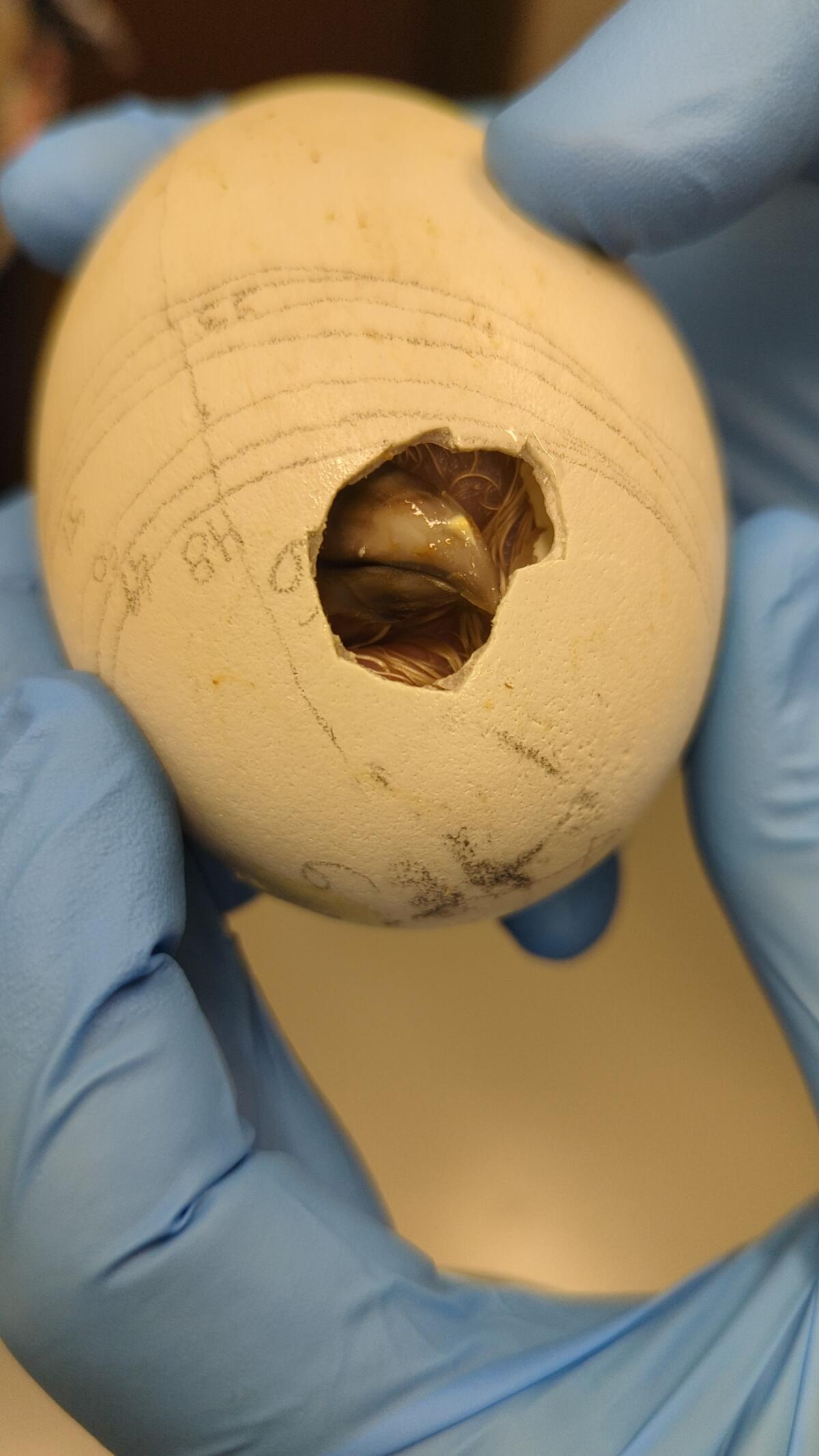Science
A total solar eclipse will be visible to millions of Americans in April. Here's how to view it

Paul Maley has spent much of his life chasing solar eclipses.
He has witnessed 83 solar eclipses from 1960 to 2023. On April 8, he plans to see the 84th aboard a cruise ship in Mexico, located right in the path of totality — the swath where the moon fully blocks the sun.
“It’s more eclipses than anyone living or dead,” he said, proudly.
But millions of Americans will also get a chance to see the next eclipse. The heavenly display will be visible — weather permitting — in North America to about 31.5 million people living in the path of totality, including a long stretch through the U.S. The rest of the continental United States, as well as parts of Alaska and Hawaii, will be able to see a partial solar eclipse.
Maley’s pursuit of the phenomenon has taken him across the world — from the icy land of Antarctica to the Cocos Islands off the western coast of Australia. Some of the experiences have been unnerving, like a trip to Turkey in 1999 during a period of unrest when military police filled the streets, Maley said.
Others have been blissfully simple. A trip to watch a partial eclipse — which doesn’t attract nearly the same fanfare as a total eclipse (more on that later) — in South Korea with his wife ended with a celebration for two at a Dunkin Donuts.
Maley, 76, says these journeys are somewhat of an obsession for him. But they also provide an escape and are an easy way to put one’s place in the universe in perspective, he said.
“No matter how many things in this world are screwed up, whether it’s political or military or economic, nobody can change what’s going on in the sky when it comes to an eclipse of the sun,” he said. “It’s going to happen. There’s nothing you can do about it, so you might as well go there and enjoy it and free yourself from all the problems that you’re facing.”
What happens during a total solar eclipse?
A total solar eclipse happens when the moon passes between the sun and Earth, completely blocking the face of the sun from view and casting a shadow onto the Earth. For people viewing the eclipse from locations where the moon’s shadow completely blocks the sun, known as the path of totality, the sky will become dark.
Depending on the weather and visibility, people along the path of totality will see the sun’s corona, the outermost part of the sun’s atmosphere, which is typically obscured by the sun’s brightness. Just before totality, viewers can also spot flashes of light — known as Baily’s beads — along the circumference of the moon.
A rapid drop in temperature typically occurs during a total solar eclipse. At times, birds will fall silent and nocturnal animals will abruptly awaken, mistaking the brief phenomenon for nightfall.
The phenomenon also has appeared — and had various interpretations — in religious texts. Some Indigenous people have traditions they observe — like abstaining from food — during solar eclipse events.
The last total solar eclipse that crossed the United States was in August 2017. It was the first total solar eclipse visible in the contiguous U.S. in 38 years, according to NASA. The April eclipse will be the last to be visible in the Lower 48 until Aug. 23, 2044.
When will this total eclipse happen and who can see it?
The eclipse will begin over the South Pacific Ocean and will move diagonally across Mexico, the United States and Canada. Mexico’s Pacific coast will be the first location in continental North America to experience totality around 11:07 a.m. PDT. The eclipse will enter the United States in Texas and make its way through Oklahoma, Arkansas, Missouri, Illinois, Kentucky, Indiana, Ohio, Pennsylvania, New York, Vermont, New Hampshire and Maine. A map on NASA’s website provides an approximate time that each location in the path of totality will see the eclipse.
While more than 30 million Americans will get a chance to experience a total solar eclipse, most will see only a partial eclipse, which happens when the moon passes between the sun and the Earth but all three bodies are not perfectly lined up, as is the case on either side of the path of totality. Rather than being completely obscured, the sun will appear as a crescent shape.
The maximum duration of totality along the eclipse path will be 4 minutes, 28 seconds, though it’s likely to be shorter in most locations.
Why does this happen and how often?
Solar eclipses occur because, as the Earth is orbiting the sun, the moon is orbiting the Earth. Roughly every 28 days as the moon makes a complete journey around the Earth it moves between the sun and Earth, said Nick DiFrancesco, an assistant professor of geology at the University at Buffalo.
But eclipses don’t happen every 28 days.
“The three factors that influence whether an eclipse is going to occur or not are the alignment of the Earth, moon and sun, that tilt or inclination of the moon’s orbit around the Earth and the last thing, essentially, is how close to the Earth the moon is,” DiFrancesco said.
Those factors have to be in perfect alignment to get a total solar eclipse.
How to get the best viewing experience
People frequently travel to the path of totality to experience the total solar eclipse with their own eyes. Eclipse chasers will tell you that’s the only way to do it. There are even travel guides that plan complete vacations with the eclipse as the central focus.
This year, Maley has helped organize a cruise for roughly 200 people to see the eclipse in Mexico. He also helped put together a trip for eclipse chasers at an all-inclusive beachfront hotel in Mazatlan, Mexico, which will feature discussions with experts in addition to the viewing.
Even the popular travel website Expedia put together vacation packages for the eclipse. The U.S. National Park Service has posted tips about which parks are best situated to see the eclipse.
However you choose to view it, experts say, you should plan ahead. Cities in the path of totality are expecting an influx of visitors and major traffic jams as people flood to those communities to get a glimpse of the scientific wonder.
The weather can also affect visibility. Experts suggest monitoring the forecast and being flexible enough to move from your initial location to one with less cloud cover, if necessary.
And while it’s unlikely you’ll need much gear to view the eclipse, there is one must-have: adequate eye protection. Solar viewing glasses, also known as eclipse glasses, can be purchased online. Experts recommend taking care to ensure the glasses meet the ISO 12312-2 standard for solar viewers and to inspect them for any damage prior to viewing the eclipse.
NASA experts say a quick way to do this is to pull out your phone flashlight and shine it onto the glass lens. If they offer enough protection, you’ll only be able to see a pinpoint of light.
Maley may be biased but he says there is no substitute for seeing an eclipse in person.
“It’s something that has to be seen. The photographs that people have taken, including myself, never do it justice, and even the videos are all two-dimensional,” he said. “It’s just something that cannot accurately be conveyed to people unless they’re right there on the same spot experiencing it with you.”

Science
Q&A: Learn how Olympians keep their cool from Team USA's chief sports psychologist

Your morning jog or weekly basketball game may not take place on an Olympic stage, but you can use Team USA’s techniques to get the most out of your exercise routine.
It’s not all about strength and speed. Mental fitness can be just as important as physical fitness.
That’s why the U.S. Olympic & Paralympic Committee created a psychological services squad to support the mental health and mental performance of athletes representing the Stars and Stripes.
“I think happy, healthy athletes are going to perform at their best, so that’s what we’re striving for,” said Jessica Bartley, senior director of the 15-member unit.
Bartley studied sports psychology and mental health after an injury ended her soccer career. She joined the USOPC in 2020 and is now in Paris with Team USA’s 592 competitors, who range in age from 16 to 59.
Bartley spoke with The Times about how her crew keeps Olympic athletes in top psychological shape, and what the rest of us can learn from them. Her comments have been edited for length and clarity.
Why is exercise good for mental health?
It gets you moving. It gets the endorphins going. And there’s often a lot of social aspects that are really helpful.
There are a number of sports that stretch your brain in ways that can be really, really valuable. You’re thinking about hand-eye coordination, or you’re thinking about strategy. It can improve memory, concentration, even critical thinking.
What’s the best way to get in the zone when it’s time to compete?
When I work with athletes, I like to understand what their zone is. If a 0 or a 1 is you’re totally chilled out and a 10 is you’re jumping around, where do you need to be? What’s your number?
People will say, “I’m at a 10 and I need to be at an 8 or a 7.” So we’ll talk about ways of bringing it down, whether it’s taking a deep breath, listening to relaxing music, or talking to your coach. Or there’s times when people say they need to be more amped up. That’s when you see somebody hitting their chest, or jumping up and down.
If you make a mistake in the middle of a competition, how do you move on instead of dwelling on it?
I often teach athletes a reset routine. I played goalie, so I had a lot of time to think after getting scored on. I would undo my goalie gloves and put them back on, which to me was a reset. I would also wear an extra hairband on my wrist, and when I would snap it, that meant I needed to get out of my head.
It’s not just a physical reset — it helps with a mental reset. If you do the same thing every single time, it goes through the same neural pathway to where it’s going to reset the brain. That can be really impactful.
Do Olympic athletes have to deal with burnout?
Oh, yeah. Everybody has a day where they don’t want to do whatever it is. That’s when you have to ask, “What’s in my best interests? Do I need a recovery day, or do I really need to get in the pool, or get in the gym?”
Sometimes you really do need what we like to refer to as a mental health day.
How can you psych yourself up for a workout when you just aren’t feeling it?
It’s really helpful to think about why you’re doing this and why you’re pushing yourself. Do you have goals related to an activity or sport? Is there something tied to values around hard work or discipline, loyalty or dependability?
When you don’t want to get in the gym, when you don’t want to go for a run, think about something bigger. Tie it back to values.
Is sleep important for maintaining mental health?
Yes! We started doing mental health screens with athletes before the Tokyo Games. We asked about depression, anxiety, disordered eating and body image, drugs and alcohol, and sleep. Sleep was actually our No. 1 issue. It’s been a huge initiative for us.
How much sleep should we be getting?
It’s different for everyone, but generally we know seven to nine hours of sleep is good. Sometimes some of these athletes need 10 hours.
I highly recommend as much sleep as you need. If you didn’t get enough sleep, napping can be really valuable.
Is napping just for Olympic athletes or is it good for everybody?
Everybody! Naps are amazing.
What if there’s no time for a nap?
There are different ways of recharging. Naps could be one of them, but maybe you just need to get off your feet for 20 minutes. Maybe you need to do a meditation or mindfulness exercise and just close your eyes for five minutes.
How do you minimize the effects of jet lag?
We try to shift one hour per day. That’s the standard way of doing it. If you can, it’s super helpful. But it’s not always possible.
The thing we tell athletes is that our bodies are incredible, and you will even things out if you can get back on schedule. One or two nights of crummy sleep is not going to impact your overall performance.
What advice do you give athletes who have trouble falling asleep the night before a competition?
You don’t want to change much right before a competition, so I usually direct athletes to do what they would normally do.
Do you need to unwind by reading a book? Do you need to talk on the phone with somebody and get your mind off things? Can you put your mind in a really restful place and think about things that are really relaxing?
Are there any mindfulness or meditation exercises that you find helpful?
There are some athletes who benefit greatly from an hourlong meditation. I love something quick, something to reset my brain, maybe close my eyes for a minute.
If I’m feeling like I need to take a moment, I love mindful eating. You savor a bite and go, “Oh, my gosh, I have not been fully engaged with my senses today.” Or you could take a mindful walk and take in the sights, the smells, all of the things that are around you.
What do you eat when you need a quick nutrition boost?
Cashews. I tend to carry those with me. They’ve got enough energy to make sure I keep going, physically.
I’ve always got gummy bears on me too. There’s no nutritional value but they keep me going mentally. I’m a big proponent of both.
Is it OK to be superstitious in sports?
It depends how flexible you are. Maybe you put on your socks or shoes a certain way, or listen to certain music. Routines are really soothing. They set your brain up for success in a particular performance. It can be really, really helpful.
But I’ve also seen an athlete forget their lucky underwear or their lucky socks, and they’re all out of sorts. So your routine has to be flexible enough that you’re not going to completely fall apart if you don’t do it exactly.
Are Olympians made of stronger psychological stuff than the rest of us?
Not necessarily. There are some who don’t get feathers ruffled and have a high tolerance for the fanfare. There’s also a lot of regular human beings who just happen to be fantastic at a particular activity.
Science
‘Ready, Steady, Slow’: Championship Snail Racing at 0.006 M.P.H.

Earlier this month, the rural village of Congham, England, played host to a less likely group of athletes: dozens of garden snails. They had gathered to compete in the World Snail Racing Championships, where the world record time for completing the 13.5 inch course stands at 2 minutes flat. At that speed — roughly 0.006 miles per hour — it would take the snails more than six days to travel a mile.
Science
Caring for condor triplets! Record 17 chicks thrive at L.A. Zoo under surrogacy method

A new method of rearing California condors at the Los Angeles Zoo has resulted in a record-breaking 17 chicks hatched this year, the zoo announced Wednesday.
All of the newborn birds will eventually be considered for release into the wild under the U.S. Fish and Wildlife Service’s California Condor Recovery Program, a zoo spokesperson said.
“What we are seeing now are the benefits of new breeding and rearing techniques developed and implemented by our team,” zoo bird curator Rose Legato said in a statement. “The result is more condor chicks in the program and ultimately more condors in the wild.”
Breeding pairs of California condors live at the zoo in structures the staff “affectionately calls condor-miniums,” spokesperson Carl Myers said. When a female produces a fertilized egg, the egg is moved to an incubator. As its hatching approaches, the egg is placed with a surrogate parent capable of rearing the chick.
California condor eggs are cared for at L.A. Zoo. The animal is critically endangered.
(Jamie Pham / L.A. Zoo)
This bumper year of condor babies is the result of a modification to a rearing technique pioneered at the L.A. Zoo.
Previously, when the zoo found itself with more fertilized eggs than surrogate adults available, staff raised the young birds by hand. But condors raised by human caretakers have a lower chance of survival in the wild (hence the condor puppets that zookeepers used in the 1980s to prevent young birds from imprinting on human caregivers).
In 2017, the L.A. Zoo experimented with giving an adult bird named Anyapa two eggs instead of one. The gamble was a success. Both birds were successfully released into the wild.
Faced with a large number of eggs this year, “the keepers thought, ‘Let’s try three,’” Myers said. “And it worked.”
The zoo’s condor mentors this season ultimately were able to rear three single chicks, eight chicks in double broods and six chicks in triple broods. The previous record number of 15 chicks was set in 1997.
Condor experts applauded the new strategy.
“Condors are social animals and we are learning more every year about their social dynamics. So I’m not surprised that these chick-rearing techniques are paying off,” said Jonathan C. Hall, a wildlife ecologist at Eastern Michigan University. “I would expect chicks raised this way to do well in the wild.”
The largest land bird in North America with an impressive wingspan up to 9½ feet, the California condor could once be found across the continent. Its numbers began to decline in the 19th century as human settlers with modern weapons moved into the birds’ territory. The scavenger species was both hunted by humans and inadvertently poisoned by lead bullet fragments embedded in carcasses it ate. The federal government listed the birds as an endangered species in 1967.

A condor, one of a record-breaking 17 at the zoo, makes its way out of its shell.
(Jamie Pham / L.A. Zoo)
When the California Condor Recovery Program began four decades ago, there were only 22 California condors left on Earth. As of December, there were 561 living individuals, with 344 of those in the wild. Despite the program’s success in raising the population’s numbers, the species remains critically endangered.
In addition to the ongoing threat of lead poisoning, the large birds are also at risk from other toxins. One 2022 study found more than 40 DDT-related compounds in the blood of wild California condors — chemicals that had made their way from contaminated marine life to the top of the food chain.
“Despite our success in returning condors to the wild, free-flying condors continue to face many obstacles with lead poisoning being the No. 1 cause of mortality,” said Joanna Gilkeson, spokesperson for Fish and Wildlife’s Pacific Southwest Region. “Innovative strategies, like those the L.A. Zoo is implementing, help us to produce more healthy chicks and continue releasing condors into the wild.”
The chicks will remain in the zoo’s care for the next year and a half before they are evaluated for potential release to the wild. Thus far, the zoo has contributed 250 condor chicks to Fish and Wildlife’s program, some of which the agency has redeployed to other zoos as part of its conservation efforts.
In a paper published earlier this year, a team of researchers found that birds born in captivity have slightly lower survival rates for their first year or two but then have equally successful outcomes to wild-hatched birds.
“Because condors reproduce slowly, releases of captive-bred birds are essential to the recovery of the species, especially in light of ongoing losses due to lead-related mortality,” said Victoria Bakker, a quantitative ecologist at Montana State University and lead author of the paper. “The team at the L.A. Zoo should be recognized for their innovative and important contributions to condor recovery.”
-

 World1 week ago
World1 week agoOne dead after car crashes into restaurant in Paris
-

 Midwest1 week ago
Midwest1 week agoMichigan rep posts video response to Stephen Colbert's joke about his RNC speech: 'Touché'
-

 News1 week ago
News1 week agoVideo: Young Republicans on Why Their Party Isn’t Reaching Gen Z (And What They Can Do About It)
-

 Movie Reviews1 week ago
Movie Reviews1 week agoMovie Review: A new generation drives into the storm in rousing ‘Twisters’
-

 News1 week ago
News1 week agoIn Milwaukee, Black Voters Struggle to Find a Home With Either Party
-

 Politics1 week ago
Politics1 week agoFox News Politics: The Call is Coming from Inside the House
-

 News1 week ago
News1 week agoVideo: J.D. Vance Accepts Vice-Presidential Nomination
-

 World1 week ago
World1 week agoTrump to take RNC stage for first speech since assassination attempt
















